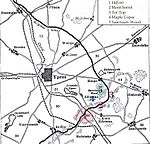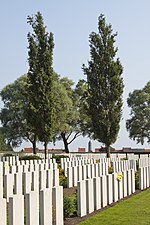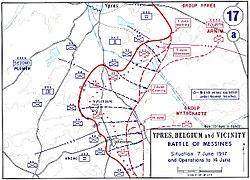Mines in the Battle of Messines (1917)

The Mines in the Battle of Messines comprised a series of underground explosive charges which were fired during the First World War at the start of the Battle of Messines (7–14 June 1917) by the British Second Army (General Sir Herbert Plumer) near the village of Mesen (Messines in French, historically also used in English and German) in Belgian West Flanders. The mines, secretly planted and maintained by British tunnelling units beneath the forward position of the German 4th Army (General Friedrich Bertram Sixt von Armin), killed approximately 10,000 German soldiers and created 19 large craters. Their joint explosion ranks among the largest non-nuclear explosions of all time. The evening before the attack, General Sir Charles Harington, Chief of Staff of the Second Army, remarked to the press, "Gentlemen, I don’t know whether we are going to make history tomorrow, but at any rate we shall change geography". The Battle of Messines marked the zenith of mine warfare. Just over two months later, on 10 August 1917, the Royal Engineers fired the last British deep mine of the war, at Givenchy-en-Gohelle near Arras.
Excerpt from the Wikipedia article Mines in the Battle of Messines (1917) (License: CC BY-SA 3.0, Authors, Images).Mines in the Battle of Messines (1917)
Oosthoekstraat,
Geographical coordinates (GPS) Address Website Nearby Places Show on map
Geographical coordinates (GPS)
| Latitude | Longitude |
|---|---|
| N 50.788333333333 ° | E 2.8655555555556 ° |
Address
Petit Bois 1 Krater
Oosthoekstraat
8956
West Flanders, Belgium
Open on Google Maps









